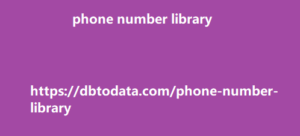Here is everything you need to know about it and how to act against it in 2023. What is SEO Spam? SEO Spam, also known as Spamdexing, is an SEO practice that involves unethical practices such as spamming other unmoderated websites to boost website ranking and promote faster web page indexing. many forms- popular ones being keyword stuffing, link spamming, private blog networks, cloaking, and hidden texts and links. With the persistent malpractice of SEO still apparent all over the internet, Google has been more aggressive in addressing it. This was especially evident in their release of the October 2022 spam algorithm update that shook the world of black hat SEO practitioners a day after its release.
Signs You’ve Been Practicing SEO Spam
One of the telltale signs that your website’s been affected by an algorithm update would be a drop in rankings. You’ll notice negative changes in impressions, clicks and overall traffic coming into your website- with some penalties completely de-indexing some of your pages. Example of A Website’s Search Impression Being Affected by The Google Spam Update But what you need to worry about are the penalties from a spam algorithm update that tends to provide worse results in search ranking. Not only will your rankings dramatically drop, but it could result in Google de-indexing your whole website. So what can you do to prevent this? 6 Ways To Win Against SEO Spam Avoid Keyword Stuffing Keyword stuffing refers to spamming your target keyword all over your content.
This is the practice of over-implementing
your keywords to the point that it appears unnatural and out of context. Here’s a painful example of keyword stuffing: “What is instant coffee? Instant coffee is a ready-to-mix coffee that serves as a low-cost solution to caffeine intake. Instant coffee nowadays comes in different flavors. There are white chocolate-flavored instant coffee, mocha-flavored instant coffee, and even plain black instant coffee. This instant mix drink also serves as a health solution for some consumers. Some instant coffee shops sell slimming coffee in the form of instant coffee.” This technique of SEO Spam is one of the most common malpractices of any aspiring SEO practitioner. Increased keyword usage does not equate to a higher ranking.
A healthy ceiling for keywords written in the
body of your content is 1%. Use AI-generated Content as a Guide, Not as an Article With algorithm updates favoring topical authority, the popularity of AI-generated content has been growing more and more popular in 2022. Digital marketers all over the internet have been publishing articles that are purely written by technology. This causes frustration for some search users regarding the accuracy of the information they’re looking for and has been catching Google’s attention for quite some time now. The best way to exploit AI-generated content is to use it as the basis for content writing. You can start by analyzing the points presented in the generated copy.
Then utilize that as a means to write your
own unique content- publishing an australia phone number library article that’s relatable, relevant to your target market, and most of all, human. Defer from Cloaking Cloaking refers to presenting a search result that doesn’t match the expectation of the users. Imagine a user searching for the term ‘medicine for cough’. After searching they chose to click a particular result that they believe best represents the answer they are looking for (because a loved one or they themselves are suffering from cough) then they unwillingly find themselves on a web page that’s making them apply for a gym membership. What the?! Visual Example of Cloaking The content and meta tags you set in your pages must always be relevant to the search term you’re targeting.
Not only does this prevent unintentionally
practicing ‘cloaking’, but it even improves your overall website ranking. Use Appropriate Hidden Content Hidden content is sometimes stuffed in a website to manipulate rankings. This is done in a way that the text or link involved in increasing the rankings is stuffed within the HTML of the web page but not appearing (or minimally appearing) in the actual display. It can appear as the following: White text on white background Underneath an element (images, videos, and other forms of media) Placed off-screen Setting opacity to 0 It is also important to note that there are particular exemptions when implementing hidden content. These exceptions are the ones that are centric on improving user experience.
Such as the following: Accordion elements
Sample Of Accordion Element in do you know how to benchmark your competitors? HTML Slideshow/Carousel web page elements Tooltips Example Of A Tooltip source: https://userguiding.com/blog/tooltip-examples-best-practices/ Keep Your Redirects In Check Google only considers a redirect as SEO Spam whenever a user is directed to an unexpected web page. For example, a user clicking on a link text writing ‘SEO strategies’ was directed to a page about ‘farm animals.’ They fell trap in what we call a Sneaky redirect. Sneaky redirects are originally intended to build traffic to a website unrelated to the anchor text or search query. As one of the SEO factors that can easily be ignored, issues with redirects can accumulate the older a website gets.
This is why it’s essential to regularly check your
redirect paths- apply the appropriate canada data redirect and make the anchor text relevant to your links. To get the full list of redirects on your website, check out my favorite tool, Screaming Frog. Avoid Link Spamming With backlinks being an essential ranking factor, it is important to keep your website safe from link spamming opportunities. A lot of people nowadays see their authoritative pages as opportunities to make money. . These are exactly the kind of opportunities you should avoid. Google’s purposely improving its algorithm updates to address these types of issues.

